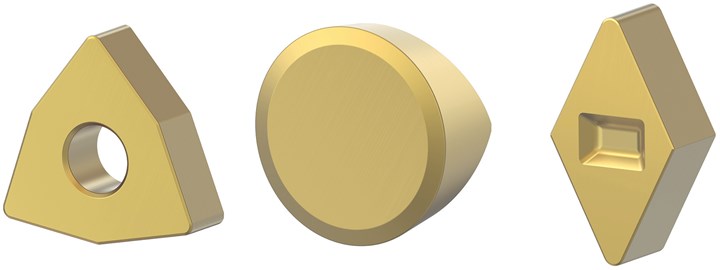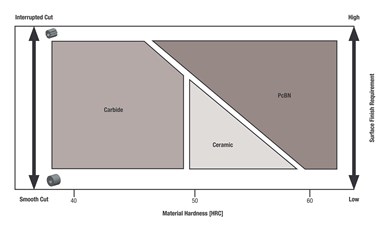Ceramic Grade Increases Productivity When Machining Hardened Steels, High-Temp Alloys, Cast Irons
Higher wear resistance and longer tool life in hard turning applications up to 58 HRC with Kennametal’s KYHK15B grade.
Kennametal has introduced its latest ceramic turning grade, KYHK15B, designed to deliver increased productivity and lower cost per edge in hard turning operations. Hard turning is often considered for punch and die and mold industry segments, to name a few, for its ability to produce contours and to generate complex forms in hardened steels.
According to Kennametal, its new ceramic turning grade provides greater depth of cut capabilities than PcBN inserts when machining hardened steel, high-temperature alloys and cast iron, as well as maximum tool life and wear resistance for the most demanding turning applications.
Depending on the surface requirement and the type of cut, the ceramic grade KYHK15B can be an economic alternative to PcBN inserts when machining hard materials >48 HRC.
“KYHK15B provides excellent edge stability, high chipping resistance and a PVD [physical vapor deposition] gold coating makes wear progression identification easy,” Robert Keilmann, product manager, Kennametal, says. “From smooth and varying depths of cut, to heavy depths of cut, KYHK15B can be an economic alternative to PcBN inserts.”
KYHK15B builds on an existing line of high-performance ceramic turning grades. A broad range of styles, sizes and edge preparations are available. These include popular styles such as double-sided roughing and finishing inserts for predictable, cost-effective machining.
Related Content
-
Machining Center Spindles: What You Need to Know
Why and how to research spindle technology before purchasing a machining center.
-
Fundamentals of Designing the Optimal Cooling System
The right mold components can help improve mold cooling and thereby produce higher-quality parts.
-
6 Ways to Optimize High-Feed Milling
High-feed milling can significantly outweigh potential reliability challenges. Consider these six strategies in order to make high-feed milling successful for your business.









.png;maxWidth=300;quality=90)




